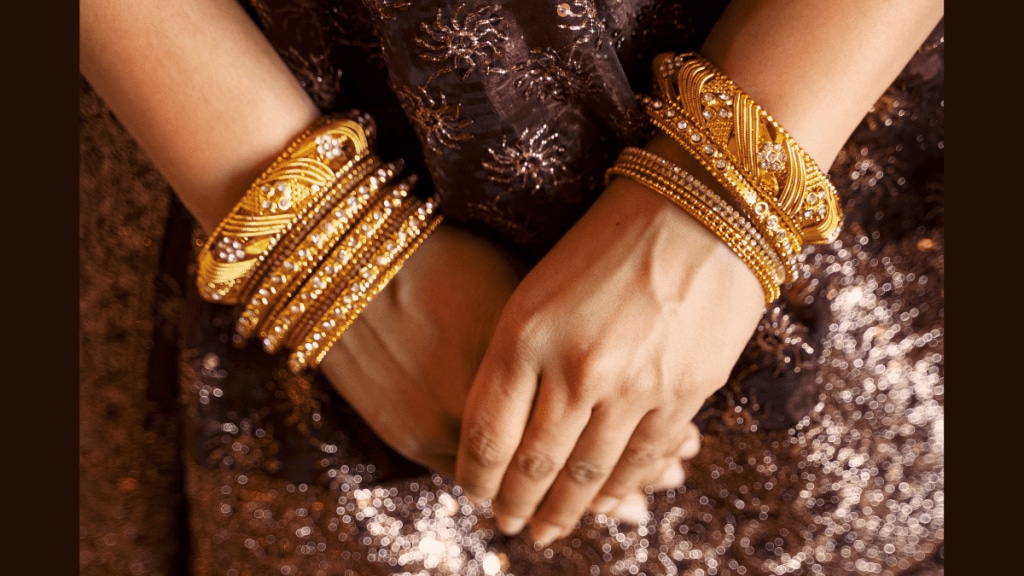As of the day of writing the story, the gold prices in Delhi for 24k are a nominal Rs 9,353 per gram. In a country like ours, where gold is given the status of a family heirloom more than a piece of fashion and always tucked away safely in heavily guarded bank lockers, a new contender is sparkling its way into the Indian hearts. Enter demi fine jewellery. Retailing at less than a fraction of what gold is sold for, yet has a little bit of gold in it, the demi-fine jewellery market seems to be the new star in the spotlight.
The rise of the in-between
Demi-fine jewellery, with its promise of premium aesthetics at a fraction of fine jewellery’s cost, is witnessing a clear rise. “Indians have always cherished their gold, but buying gold or silver for everyday wear doesn’t always make sense. That’s where this category steps in as the ideal middle ground for modern women, particularly working professionals,” Pallavi Mohadikar, Founder and CEO, PALMONAS, told financialexpress.com. Her brand claims to have sold over 1 lakh pieces last month alone, boasting a 15x revenue jump from the previous year.
This isn’t just a metro phenomenon. “We are also seeing growth in tier 2 and tier 3 cities, which indicates a lagging but expanding market beyond major urban centers,” Mamta Gupta, co-founder, Urja by Zariin, noted. The numbers back her up: the Indian gems and jewellery market, including demi-fine, is projected to balloon from USD 100.94 billion in 2024 to USD 168.62 billion by 2030, with demi-fine itself eyeing a 4.5% CAGR through 2034, according to Praveen Govindu, Partner, Deloitte India. But who’s driving this glittery revolution? Millennials and Gen Z, armed with rising disposable incomes and a penchant for self-expression, are the torchbearers.
A balancing act
What makes a consumer pick a demi-fine piece over a gold bangle or a Rs 100 trinket? Dishi Somani, founder of Dishi S Designer Jewellery, argues it’s a cocktail of factors “Design matters, as consumers tend to look for something original, classy, and something that suits their fashion sense. Price matters too, as most buyers look for value for money while maintaining quality.” Her brand moves 100-150 pieces monthly, with sales spiking during festive seasons like Diwali—a pattern echoed across the industry.
Yet, it’s not all smooth sailing. Mohadikar points to the challenge of perception: “In India, jewellery usually falls into two categories—gold/diamond jewellery (which people see as an investment) and fashion jewellery (which is often low-quality). Educating customers about this in-between category is key,” she noted. Add to that the trust hurdle—jewellery is tactile, and convincing buyers through a screen is no small feat. PALMONAS counters this with experience stores and robust e-commerce visuals, but the jury’s still out on whether this hybrid model can scale nationwide.
Caught between tradition and trend
Positioning is a tightrope walk. “We provide high-quality craftsmanship and exclusivity at a more accessible price point, appealing to consumers who prioritise design and personal significance over traditional investment-heavy pieces,” Gupta explained. At one-fifth the cost of fine jewellery, with lifetime warranties, her brand pitches demi-fine as “modern affordable heirlooms.” Meanwhile, Somani’s Dishi S straddles “timeless sophistication” and “modern tastes,” dodging the transient trap of mass-market baubles.
But here’s the rub: in a price-sensitive market obsessed with gold’s investment allure, are Indians really splurging on this hybrid? “While gold remains a strong investment choice, Indian consumers, especially younger generations, are increasingly spending on demi-fine jewellery as a fashion-forward, everyday accessory,” Govindu argued. Self-indulgence and gifting, not inheritance, fuel this shift—a cultural pivot that’s as bold as it is brittle.
What does the future hold?
The next five years look dazzling, if the optimists are right. “It’s only going to get bigger! More people are realising they don’t need to spend a fortune to get high-quality, stylish jewellery,” Mohadikar predicted. Tier 2 and 3 cities, with their untapped potential, are the new frontier. Gupta envisions tech like AI ushering in personalisation, while sustainability—think lab-grown diamonds—gains traction. PALMONAS has already dipped its toes into this pool, with necklaces and mangalsutras driving 36% of its revenue.
Yet, challenges loom. Competition is fierce, pricing is a perpetual puzzle, and consumer education remains a slog. “Indian customers are extremely price-conscious, and therefore, utmost care has to be exercised not to compromise on price and ensure the use of high-quality materials,” Somani added. In a market where gold is king, convincing buyers to bet on demi-fine’s charm over carats is no small ask. Will demi-fine exceed the gold obsession? According to a Deloitte report, the Indian jewellery sector is valued at about $80- 85 billion in FY24, with a projected estimate of reaching $155 billion by 2030. For now, it’s a glittering gamble—and India’s young, fashion-savvy crowd is rolling the dice.
